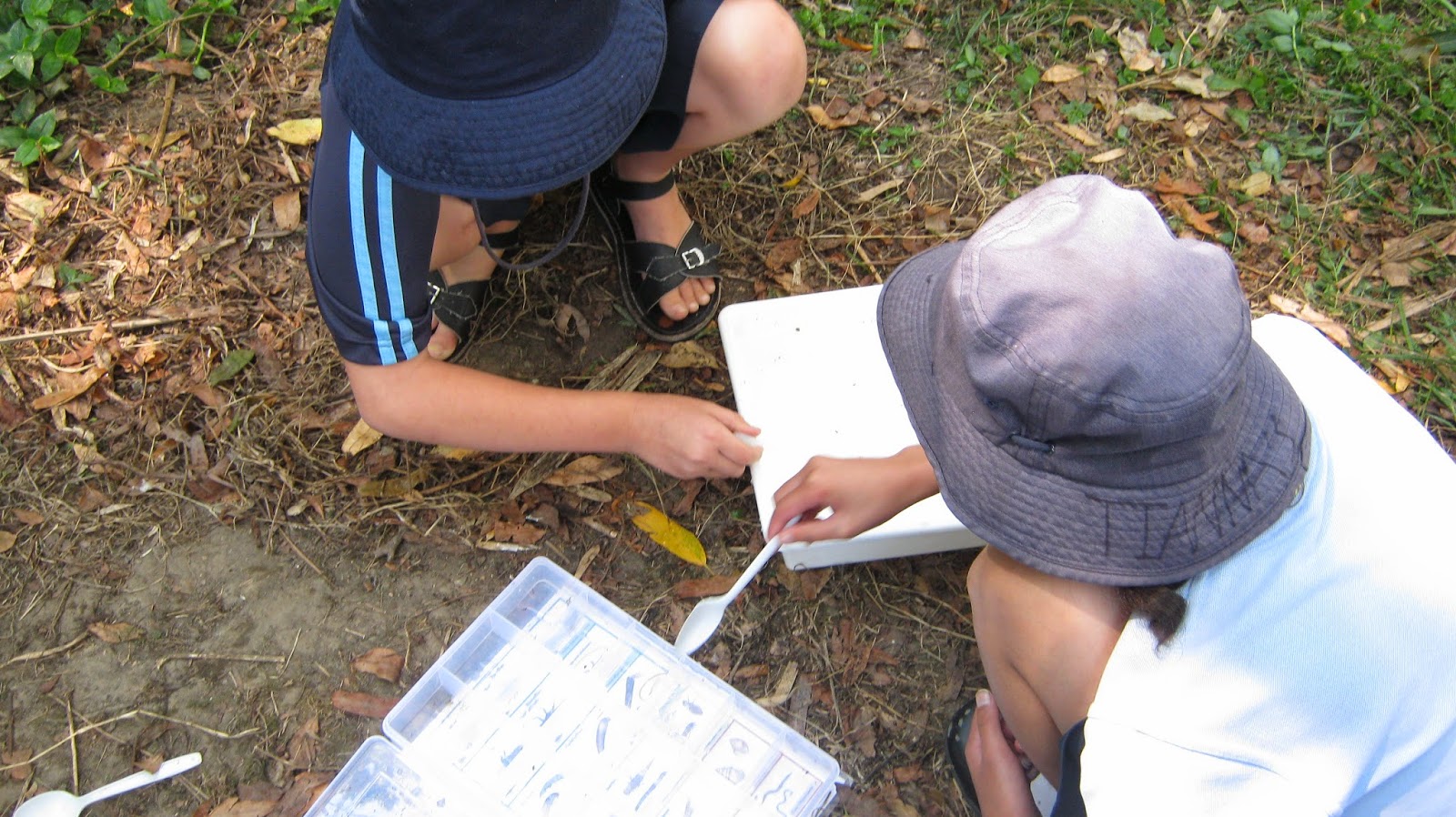First, we talked about landforms and thought about how water runs off the land and collects in valleys in the landscape. Water then flows into other waterways and eventually ends up in a river which flows to estuaries and the sea.
Our Pakuranga Stream flows into the Tamaki River (awa) and then into the Waitemata Harbour.
We learnt how to use a tube to collect stream water, and test the clarity of the water. Next we took the air temperature and temperature of the water. Then we used nets to catch as many invertebrates as we could. We used a plastic box with compartments to put specimens in. We had an identification card underneath the box so we had to think about where to put the creature that we caught. Each invertebrate on the card has a coloured line around it.
Green borders = clean, high quality water
Yellow borders = medium quality water
Red borders = poor water quality.
Sadly, our specimens were more in the red zone...snails, water boatmen...
 |
| Julia made us think about rain water and where water goes when it falls on the land |
We learned how to use the plastic tube to measure water clarity. Water should be clean and free of pollution, and not hot or else invertebrates cannot survive in it.
 |
| The specimen box is really useful... we had to transfer the animals really carefully so we didn't kill them |
 |
| Filling up the tube |
 |
| "Can you still see the sinker?" |
 |
| Working as a team |
 |
| Transferring water to the main collecting tray so the animals had some water to swim in |
 |
| "Is this enough water for the animals?" |
 |
| Putting the invertebrates in the smaller identification box |
 |
| "Which invertebrate do you think this is...?" |
The Eco-Warriors team.
12.3.14


No comments:
Post a Comment